Chinese Tea Culture: How Has it Influenced the Mandarin Language?
Tea is integral to Chinese culture. Through learning Mandarin, we can understand its cultural importance, wider philosophical concepts, and its esteemed history in the Middle Kingdom.
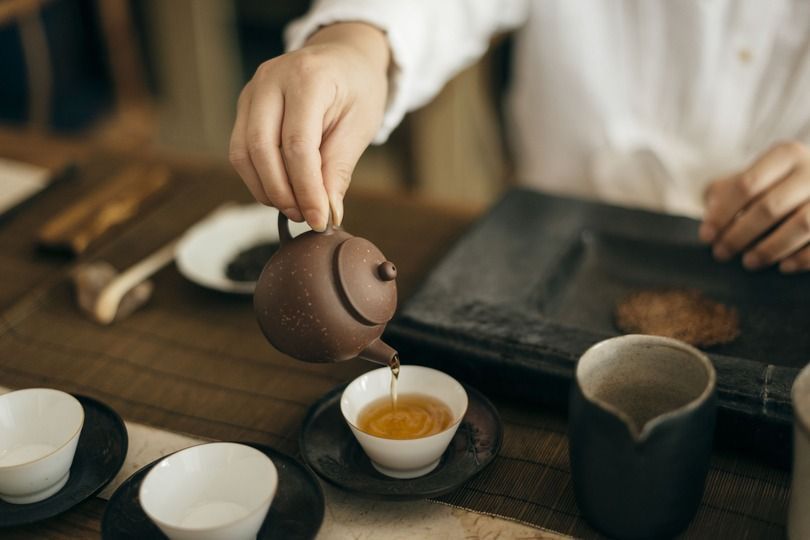
A warming cup of tea is sometime more than just a simple hug in a mug. Tea 茶 chá holds deeply entrenched significance in Chinese culture, represented through a host of rituals and social customs. This article will demonstrate through a number of Mandarin idioms and phrases how we can understand the cultural importance and broader philosophical concepts related to tea and its history in the Middle Kingdom.
Why exactly is Chinese tea culture 茶文化 chá wénhuà so ingrained into China's collective psyche? 茶艺 cháyi (the art of drinking tea) encompasses the myriad practices related to growing, preparing, and consuming tea. Over several millenia, these practices have propelled China into an unparalleled brewing colossus, inspiring a vast array of traditions and routines. So, get the kettle on, get comfy, and prepare to become acquainted with 茶艺 cháyi to China and the Chinese language.
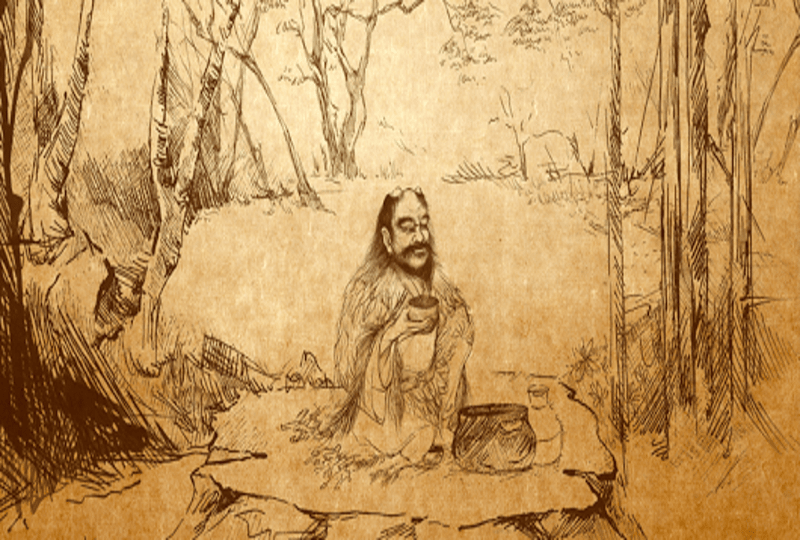
Who Brewed the First Cup of Tea?
The origins of how the humble tea leaf underwent the magical mingling with ordinary boiled water 开水 (kāi shuǐ) are believed to date back almost 5000 years, to the era of the Emperor Sheng Nong 神农 (literally, "Divine Farmer"). While relaxing in his bucolic grounds, Sheng Nong observed a falling tea leaf whimsically catch the breeze, swirling into a nearby bowl of boiling water. The resulting matrimony would change the world as we know it! The Emperor originally named the mystical brew "chá" 查, the Chinese word meaning to "check" or "investigate"—while being a homophone with the word for tea, the character for tea itself is very different (查/茶).
The seductive scent wafting from the bowl so captured the Emperor's attention that he at once sipped the concoction. The instant curative and cleansing effects of the piping elixir, as it "investigated" his body, set the stage for the beverage's giant stamp on Chinese society. Over the centuries, as dynastic cycles ebbed and flowed, tea continued to have a hugely significant impact on Chinese daily life.
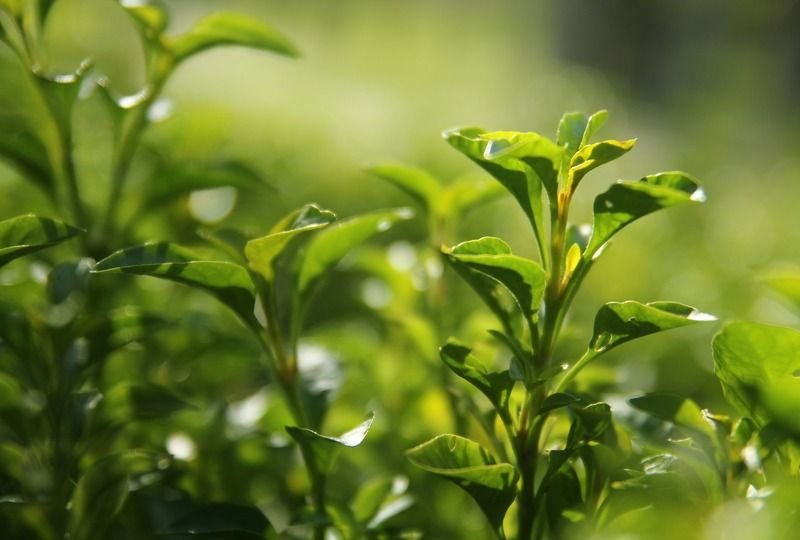
Common Varieties of Chinese Tea
- 绿茶 lǜ chá — Green tea
- 黄茶 huáng chá — Yellow tea
- 白茶 bái chá - White tea
- 红茶 hóng chá — Black tea (nope, it ain't red 红 hóng)
- 黑茶 hei chá - Dark tea (普洱茶 pǔ'ěrchá)
- 乌龙茶 wūlóng chá — Oolong tea (black dragon tea)
Although all tea comes from the same plant (Camellia sinensis), the above varieties demonstrate the diverse flavors that are found in different kinds of tea. While Oolong, popular in 福建 Fujian and 台湾 Taiwan, carries punchy, peaty flavors, green tea, such as the famous 西湖龙井 xī hú lóngjǐng of 浙江 Zhejiang, holds far subtler notes.
Then there are the unoxidized 普洱茶 pu'er varieties of 云南 Yunnan, which are often earthy and mellow, yet highly caffeinated. "Lapsang Souchong" (正山小种), one of the most popular black teas, is a particularly smoky brew, as the leaves are traditionally dried over a pine-wood fire. Even though your supermarket-brand teabags effectively originate from the same plant, the processing and care undertaken in China typically result in a far more complex cup.
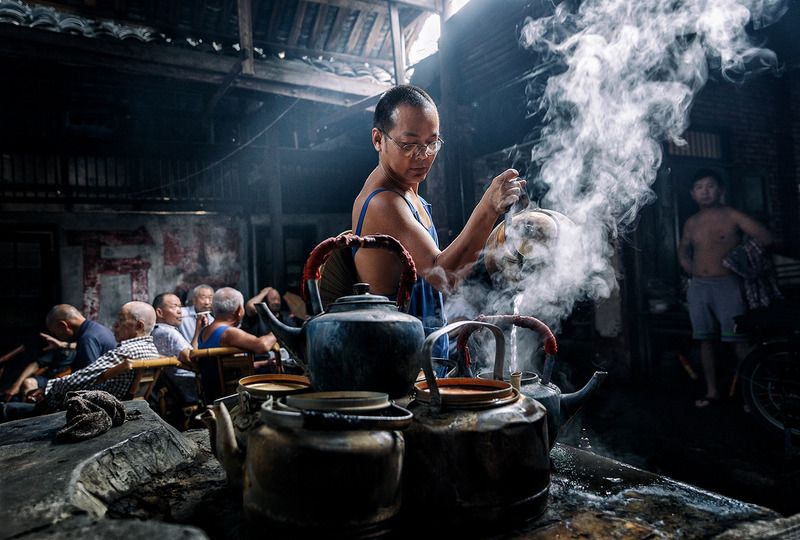
Useful Tea Vocabulary
茶壶 cháhú - teapot
茶杯 chábēi - teacup
散茶 sǎnchá - loose Tea
茶叶 cháyè - tea leaves
勺子 sháozi - spoon
杯子 bēizi - cup
泡 pào - brew
倒 dào - pour
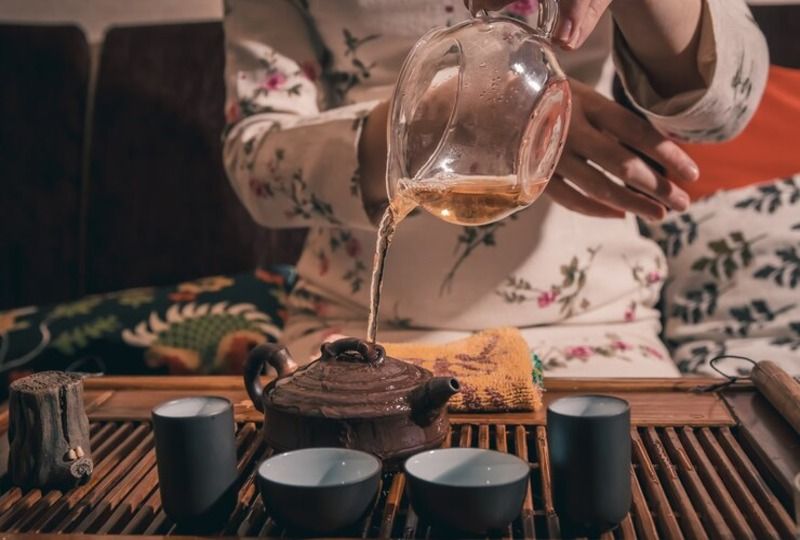
Respecting the Process: The Ceremony
To give the mighty leaf its due respect, the tea ceremony 功夫茶 ɡōnɡfu chá has been integral to Chinese culture for many centuries, dating back to the Tang Dynasty 唐朝 tángcháo (618–907). Based upon mindfulness and a sincere appreciation for the art of tea, this ceremony is more than just a way of brewing and consuming tea; it is a meditative experience that mirrors the philosophy of harmony and balance which is deep-rooted in Chinese culture.
To truly embody the philosophy of tea culture, the ceremonial process is a key component to mastering the art. Here are the steps to follow:
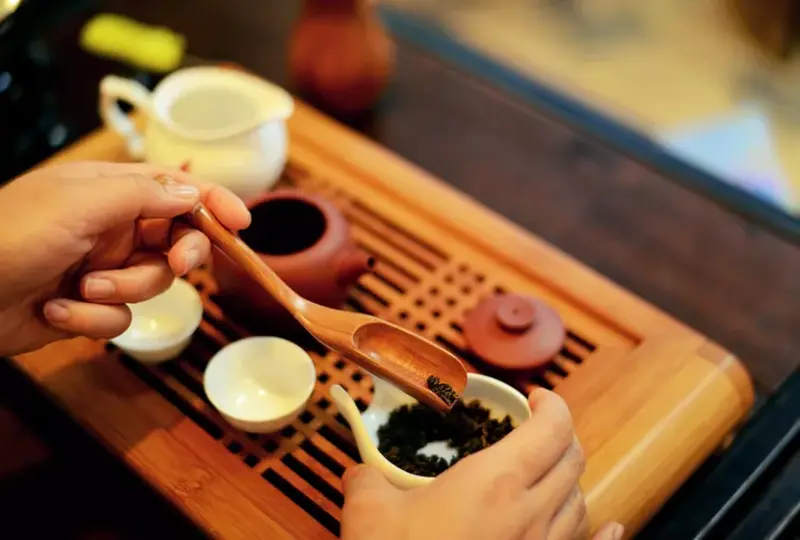
1. Prepare a teapot, teacups, tea strainer, tea leaves, tray, and tea leaf holder. Depending on the tea variety, we should use different tea sets (white porcelain is used for green tea, while purple sand is more often used for red tea).
2. Rinse the teapots and teacups-reheating the teacups can help fully release the fragrance.
3. Heat the water to a boil (using only spring water).
4. Place the tea leaves into the teapot using the tea leaf holder. Usually, leaves should fill 1/3 of the teapot. This step is knows as "black dragon enters the palace".
5. Wash the tea leaves by quickly pouring hot water into a teapot for a few seconds, and then pour it quickly to remove the "first brew impurities" that collect on the surface of leaves.
6. Brew the tea by refilling the teapot with boiled water before covering to preserve the aroma.
7. First pour the tea broth into tea cups, then transfer into the large fair cup, shake it up, before decanting into smaller cups.
8. Offer tea cups to guests with both hands to show respect. Take a deep whiff and sip away!
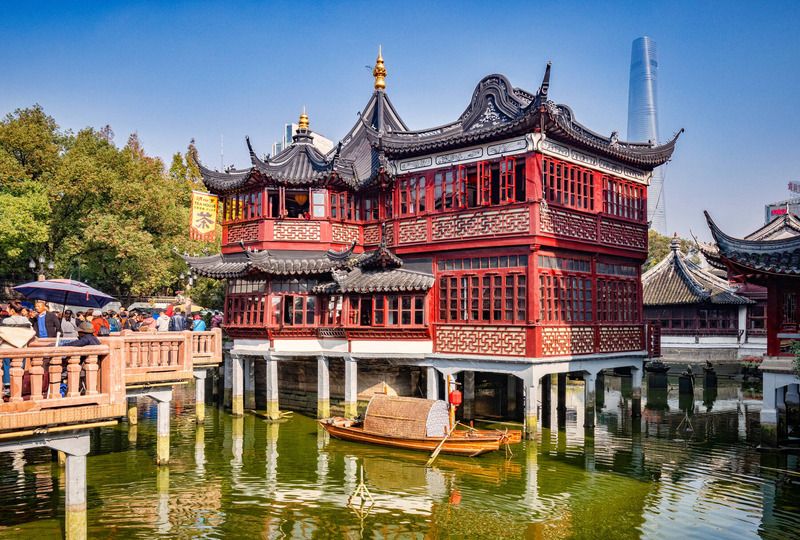
Habitual Tea Drinking
Upon arrival in China, you'll immediately notice an abundance of teahouses. Diversification seems important; not only can you imbibe a hot cup, but you can also enjoy other pursuits such as a game of 麻将 májiànɡ (Mahjong), 象棋 xiàngqí (Chinese chess), 按摩 ànmó (massage), or even 采耳 cǎiěr (ear-cleaning).
Many 四川人 sìchuān rén believe cochlear cleaning improves health by stimulating acupressure points in the ear. Could there be a better accompaniment to a cup of tea? As the instruments are sharpened, ready to probe, a tasty cup of 菊花茶 júhuā chá (chrysantheum tea) is the perfect antidote to calm the nerves?
Teahouses welcome people from all strata of society and are a great way to quickly immerse yourself in the local culture. However, beware of the notorious big-city tea scams. Friendly and attractive locals may request to practice English with you "over a cup of tea". The next thing you know, you're trapped facing an insurmountable tea house bill, with no obvious escape! Another sinister tea-related scenario is you happen to receive an invitation from a Chinese official to "come and drink tea." This invitation is a shrouded nod that you've run afoul of the local authorities and could well be in trouble.
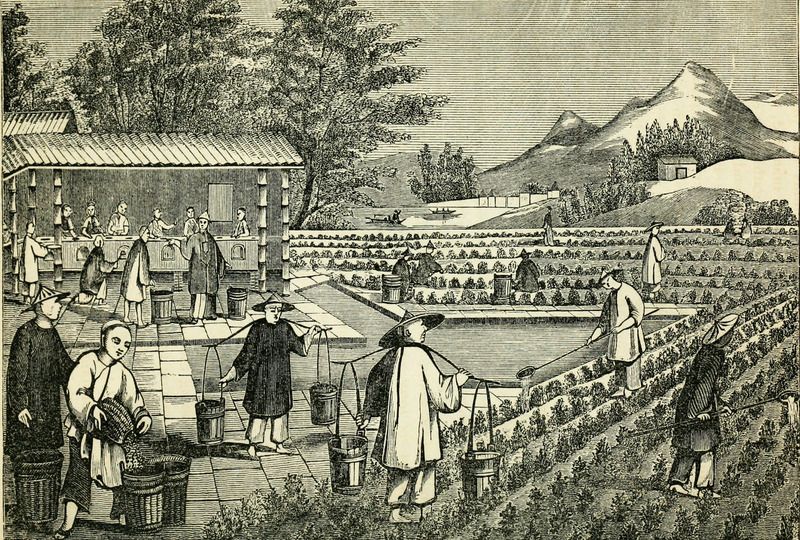
With tea culture being so intrinsic to China's identity, of course there are a plethora of popular phrases and idioms that bounce around the vernacular. Let's take a look at some examples:
绿茶婊 lü chá biao “green tea bitch" (a calculating, yet attractive lady)
禅茶一味 chán chá yīwèi "tea and zen have the same flavor" (they go hand-in-hand; people from all walks of life should go and drink tea!)
茶余饭后 chá yú fànhòu “over a cup of tea/after dinner” ("leisure time" equates to lounging around with a hot cup of tea)
人走茶凉 rén zǒu chá liáng “once people walk away, tea becomes cold" (don't burn your bridges, drink it while it's hot, metaphorically)
三茶六饭 sān chá liù fàn "serve three types of tea and six dishes" (a feast is imminent-a real way to impress)
口水多过茶 kǒushuǐ duō guō chá "more saliva than tea" (you're talking too much)
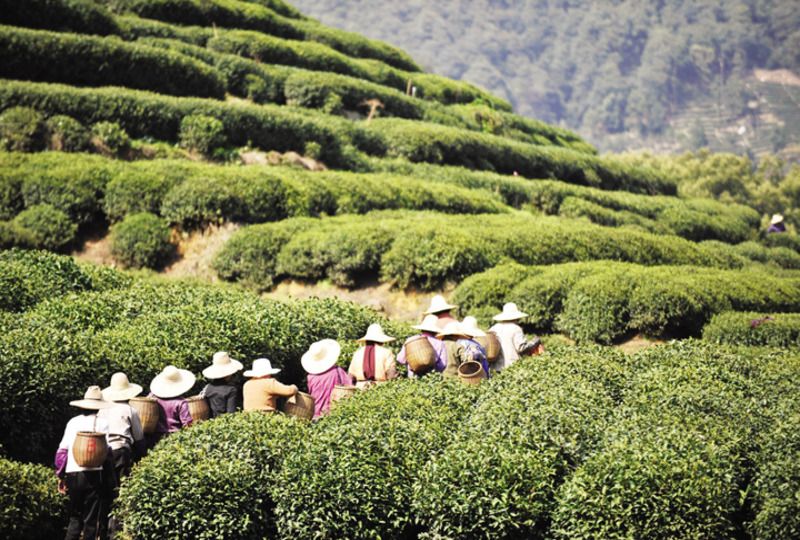
Tea's Unbreakable Bond to the Middle Kingdom
Tea is an inseparable element of Chinese culture. Over time, it has seeped through each level of society. Even now, we are seeing younger generations becoming transfixed with another tea phenomenon: bubble/boba Tea 珍珠奶茶 zhēnzhū nǎichá (cue Tang poets rolling in their graves!). Tea's influence on language and culture cannot be overestimated, with it being one of China's most famous cultural exports. Knowledge of tea terminology will certainly put you on the front foot if you are either learning Mandarin or planning to visit China, so here are some final phrases for you to get started on your Chinese tea adventure:
- 我喜欢喝茶 wǒ xǐhuān hē chá - I like to drink tea.
- 请来一杯茉莉花茶 qǐng lái yībēi mòlìhuā chá - A cup of jasmine tea please.
- 请给我来一杯绿茶 qǐng gěi wǒ lái yībēi lǜchá - A cup of green tea please.
- 这包普洱茶多少钱?zhè bāo pǔ'ěr chá duōshǎo qián? - How much is this packet of pu'er tea?
- 请给我再倒一杯 qǐng gěi wǒ zài dào yībēi - Please refill my cup!
